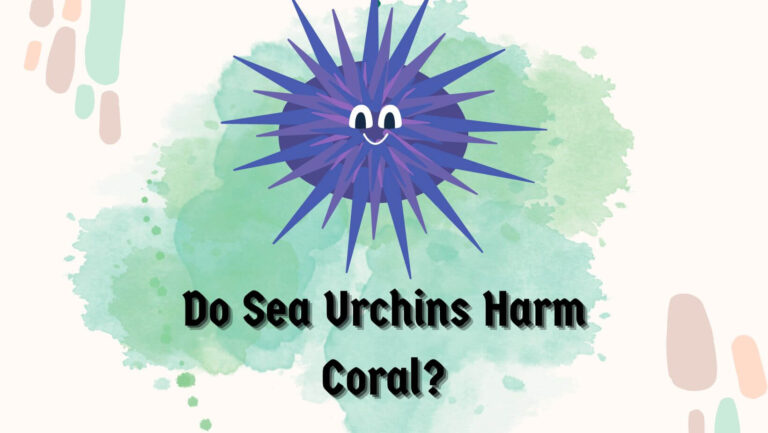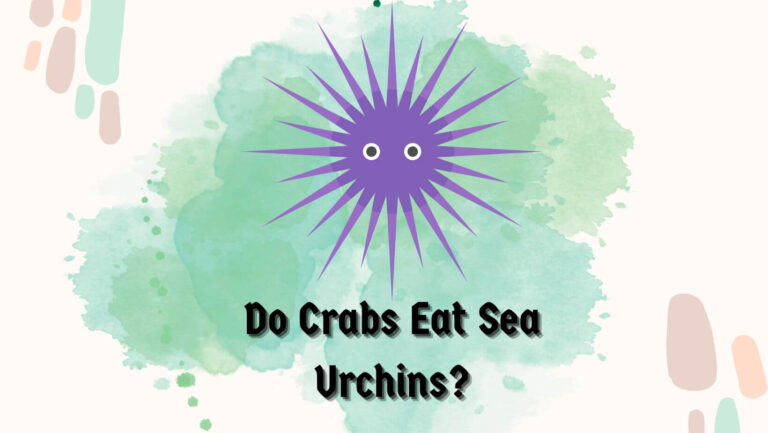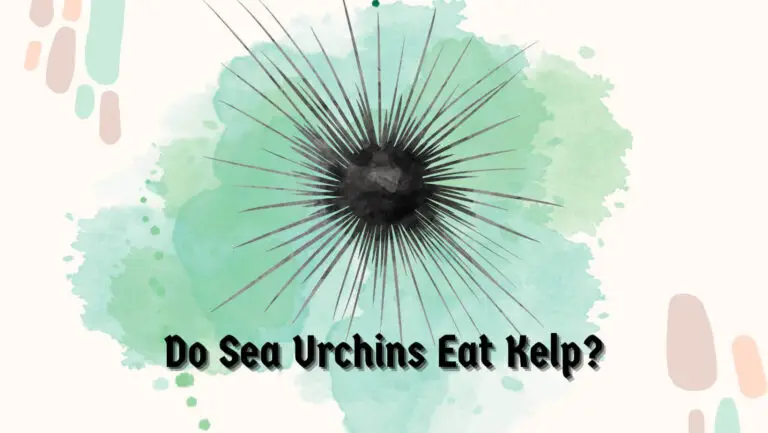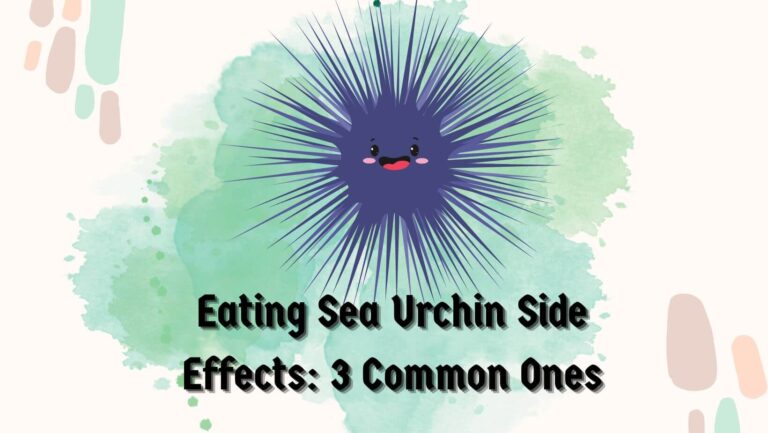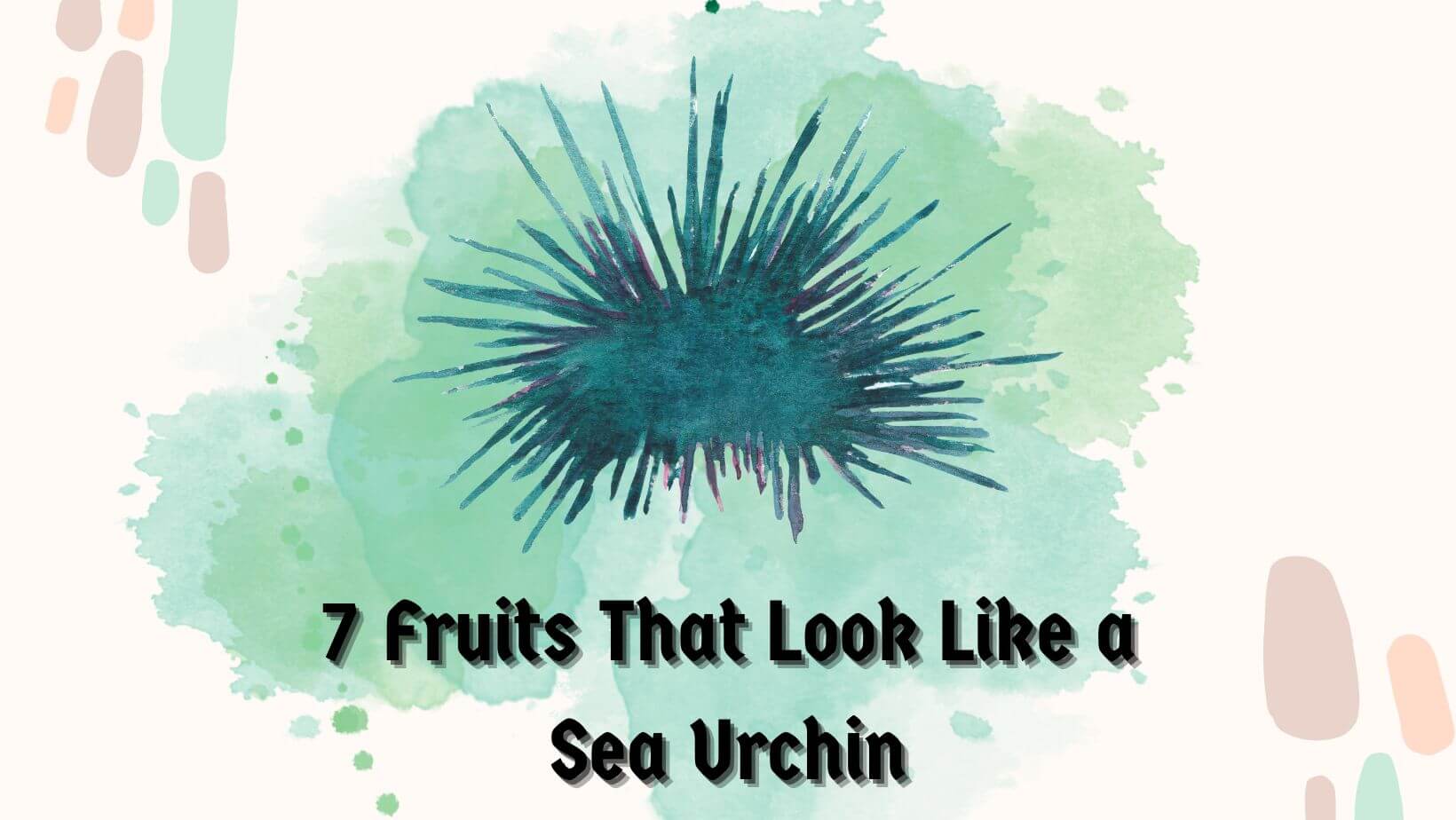
Well, we’ve already shared many articles on sea urchins on this website for you to check out. But today, we will talk about fruits that look like sea urchins.
Yes, you’ll embark on a fascinating journey to explore a peculiar intersection between the world of fruits and the intriguing aesthetics of sea urchins.
After reading this article, I hope you’ll crave more than one fruit that looks like sea urchins. Let’s look at the seven most common ones promptly.
Table of Contents
7 Fruits That Look Like a Sea Urchin

Dvurian: The Thorny Delight
If you’re looking for a fruit that stands out with its intimidating exterior resembling the formidable armor of a sea urchin, look at Dvurian. It’s edible and is popularly notorious for its potent aroma.
The durian fruit hails from Southeast Asia, and a 100-gram serving of durian can have approximately 147 calories, 27 grams of carbohydrates, and 2 grams of fiber. Since it’s edible, don’t let the thorny facade discourage you.
It will help if you peel away the spiky husk because a creamy and custard-like delight awaits you peel away the spiky husk. It’s not only delicious & aromatic but also rich in many nutrients.
Apart from carbohydrates & fibers, it has vitamins such as vitamin C, B6, and folate. You can make many dishes using this durian fruit. My favorite one is Durian Pancakes. Yes, this delectable durian dessert will satisfy your taste buds and nourish your body.
To make this recipe, mix durian flesh, coconut milk, eggs, & a touch of sugar and make a luscious batter. As you would cook any pancake, cook this batter to relish the unique flavor that only fruits like durian can deliver.
Kiwano (Horned Melon): Nature’s Surprise

If you want to know about another fruit that makes a true sea urchin lookalike, look at Kiwano. This fruit has a vibrant orange spiky exterior (almost similar to sea urchins) and is popularly known as a horned melon.
If you cut open this fruit, you’ll get a chance to see & enjoy gelatinous lime-green flesh studded with edible seeds. Just like durian, this fruit is also packed with essential nutrients. Plus, this fruit is perfect for people looking to lose weight because Kiwano is high in fiber but low in calories.
However, Regarding nutritional benefits, the kiwano is good. A 100-gram serving of kiwano will provide you with approximately 44 calories, 9 grams of carbohydrates, and a whopping 3.6 grams of fiber.
Also note that this fruit is a great vitamin C, vitamin A, and potassium source. With a tangy twist, Kiwano is best suited to salads. I usually prefer to combine diced kiwano with cucumber, cherry tomatoes, feta cheese, and a drizzle of lime dressing. Believe it or not, you should try this delightful salad. I guarantee you will enjoy the unique texture and flavor of Kiwano.
Rambutan: Nature’s Spiky Treasure

Another fruit that is native to Southeast Asia and closely resembles a sea urchin with its spiky red exterior is the rambutan. Beyond its eye-catching appearance, this juicy delight is as beautiful as it is tasty.
You should know that this fruit is good for people with weakened immune systems. Besides boosting the immune system, rambutan offers a range of health benefits. If you want to satisfy your sweet tooth, go ahead and give this fruit a try. Not only is it tasty & juicy, but it is also rich in vitamin C. Only 100 grams of rambutan can provide you with around 20 milligrams per 100 grams
Buddha’s Hand: The Mystical Citrus
I hope you are already prepared to be mystified by this citrus fruit that bears an uncanny resemblance to a sea urchin. Not only is this fruit popular for its unique shape but also for its captivating fragrance, which makes it a true marvel in the fruit kingdom. I’m talking about Buddha’s Hand, which has a long history in Chinese medicine.
Buddha’s Hand has been used in traditional Chinese medicine for decades to relieve coughs, soothe digestive issues, and even reduce anxiety. I’ll advise you to add this fruit into your life.
There are many creative ways to use Buddha’s Hand in cooking. Trust me, this fruit will not only add a touch of culinary intrigue but also it’ll provide potential health benefits. To help you explore some delightful ideas, I’m giving the three most popular of them below:
- Buddha’s Hand-Infused Vodka: You first need to cut the Buddha’s Hand into slices and keep it in a bottle of vodka for a week at least. This will result in aromatic infusion and citrusy vodka, which you can use to make refreshing cocktails whenever a guest arrives.
- Buddha’s Hand Sorbet: If you’re not a vodka fan, consider making a simple syrup by combining water, sugar, & Buddha’s Hand zest. Later, you can use this syrup in fresh lemon juice or freeze it for a zesty & tangy sorbet.
- Buddha’s Hand-Infused Olive Oil: We can also infuse oil from this fruit. First, you must combine Buddha’s Hand zest with extra virgin olive oil and let it infuse for a few days. You can use this infused oil as a flavorful dressing for salads. I usually like to drizzle it over roasted vegetables.
Pitaya (Dragon Fruit): Vibrant Elegance

Another great fruit that shares striking & colorful spines and visual similarities with a sea urchin is pitaya. It would help if you considered adding this fruit to your treatment as it’s low in calories.
You should know that this tropical beauty boasts a vibrant exterior, with varieties ranging from deep pink to yellow. When it comes to taste, you’ll find pitaya subtly sweet, with a refreshing flavor & mild tropical essence.
Don’t be fooled by its unassuming appearance; pitaya is not only tasty but also contains many essential vitamins, minerals, & antioxidants, making it a nourishing addition to your diet.
Eating a 100-gram serving of pitaya will provide you with approximately 60 calories, 9 grams of carbohydrates, & 1.9 grams of fiber. This fruit is quite versatile, and you can enjoy it on your own or incorporate it into various dishes. I often use pitaya in smoothie bowls, fruit salads, and sometimes savory recipes.
Jackfruit: The Prickly Wonder

I hope you are already familiar with the Jackfruit, which is a tropical fruit that bears a striking resemblance to a sea urchin with its spiky exterior. This fruit is quite popular in culinary and hails from South Asia.
You should know that this behemoth fruit is as versatile as visually intriguing. Not only does this fruit come with a spiky exterior, but it also has an array of nutritional benefits. You should note that Jackfruit tends to be rich in fiber, and a 100 g serving can contain approximately 1.5 grams of dietary fiber.
Apart from this, Jackfruit is also a great source of vitamin C, potassium, and vitamin B6. People often use this fruit in meals because Jackfruit adds a unique twist and provides essential nutrients for our bodies.
Lychee: The Sweet Delicacy

Last, we have lychee, a fruit resembling a sea urchin with its spiky and textured skin. It’s famous in Asian countries like India, Pakistan, China, etc., and Native to Southeast Asia. I hope you already know about this sweet and juicy fruit that has been cherished for centuries.
Consider eating lychee if you are looking for a treat or fruit that looks like sea urchins and can satisfy your taste buds. It is tasty and has various health benefits because it contains vitamin C.
In 100 g of sponge, you will get approximately 71.5 milligrams of Vitamin C and other essential nutrients in small amounts like copper, potassium, and Vitamin B6. I am likely lychee because it’s a refreshing & nutritious addition to any diet.
You May Also Like Reading
Conclusion
I’ve given you all the essential information you need to know about fruits that look like sea urchins. I hope you have enjoyed this journey through 7 remarkable fruits that look like sea urchins.
There are many fruits, from durian’s thorny allure to lychee’s sweet delicacy; each comes with a unique experience for your senses. Therefore, the next time you encounter any extraordinary fruits that look like a sea urchin, take a moment to appreciate their nature’s whim and savor their delightful flavor.
I hope you enjoyed exploring these fruits, and if yes, consider sharing them. Your share will help many people learn about the fruits that look like sea urchins and how they can enjoy each of these fruits. Do check our other helpful guide on sea urchin facts & FAQ. See you in the next post, till then, take care & goodbye.


